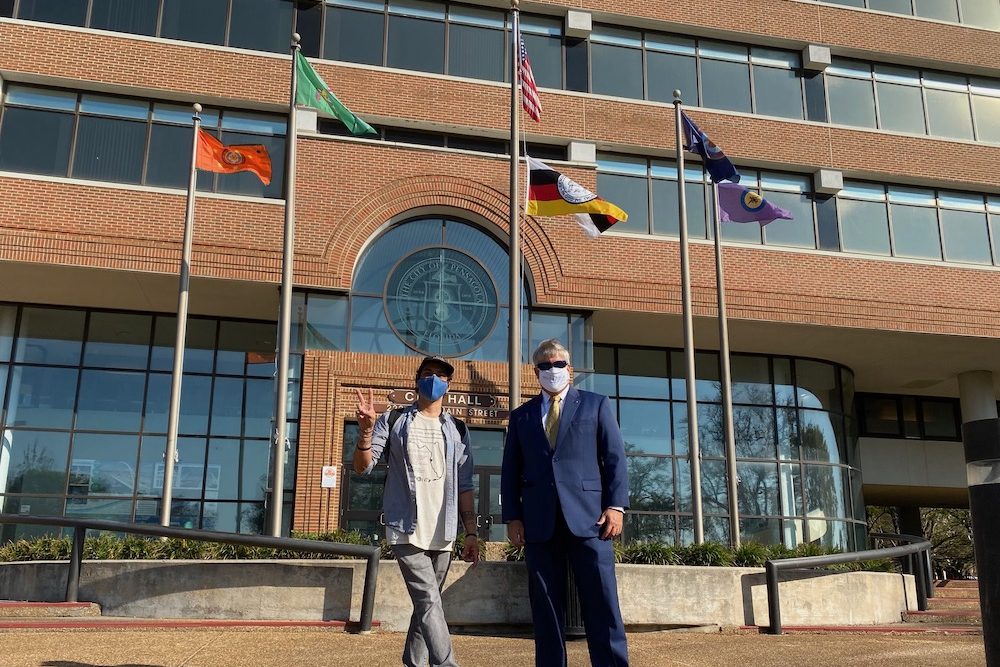by Jeremy Morrison, Inweekly
Pensacola City Hall looks a bit different Monday as the city celebrates its first official Indigenous Peoples’ Day. Instead of flying its traditional display of flags denoting the varying nations that have controlled the area throughout the past few centuries, Pensacola has raised the flags of what are known as the Five Civilized Tribes.
“It’s a lot more colorful,†Mayor Grover Robinson noted during his regular Monday morning press conference.
Indigenous Peoples’ Day was born out of efforts began in 1977, when the International Conference on Discrimination Against Indigenous Populations in the the Americas, with the backing of the United Nations, began pushing for the United States to substitute the designation for its traditional Columbus Day. In 1992, the city of Berkeley, Calif., became the first municipality to declare such a recognition, using the occasion to launch Native American educational efforts within schools and at museums. In the years since, numerous cities and more than a dozen states have designated the second Monday in October as Indigenous Peoples’ Day.
“It is the responsibility of the city of Pensacola to foster inclusivity and today we recognize our responsibility to honor the nation’s Indigenous roots, history and traditions and cultural contributions,†Mayor Robinson said Monday.
The five flags flying at city hall represent the Creek, Cherokee, Choctaw, Chickasaw and Seminole tribes. The municipal gesture was made at the suggestion of local artist Sean Linezo, who also collaborated with Pensacola City Councilwoman Sherri Myers last month to bring the concept of an Indigenous Peoples’ Day designation to city council.
“Indigenous People didn’t really fly flags like this,†Linezo said, speaking during Monday’s mayoral press conference. “It was actually Christopher Columbus who introduced these symbols of colonization in the Americas when he planted the Spanish flag on Turtle Island way back in 1492 to represent control and possession of the land.â€
Linezo — who serves as artist-in-residence for School House 4 and is juggling a collection of projects centered on this theme, including an exhibit at the Pensacola Museum of Art and a public art proposal currently being considered by city council — said that contrary to the flags of colonialism, the tribal flags flying at city hall were not intended to be a “symbol of domination†or conquest over a territory.
“Not to claim any kind of victory,†Linezo continued, “other than finally being recognized again. And, for me, that’s already a nice, new beginning for the post-2020 future.â€
Mayor Robinson described the tribal flags, as well as the city’s designation of an Indigenous Peoples’ Day — which purposefully coincides on the calendar with Columbus Day — as an attempt to be more historically and culturally inclusive and said the city can “look forward to a larger celebration next year.â€
“Columbus Day does not provide an opportunity for us to reflect on colonialization of North America by Europeans,†Robinson said. “Prior to colonialization Indigenous People lived and flourished in America, including Florida and right here in Pensacola for thousands of years.â€
